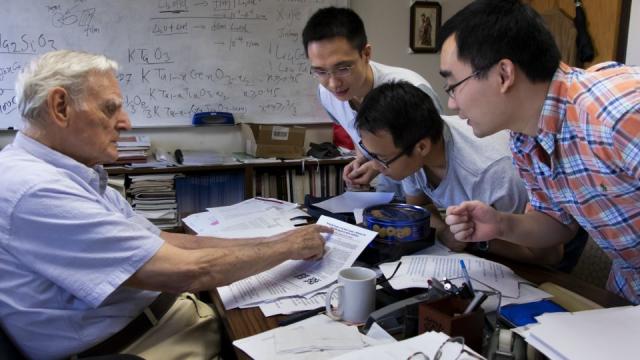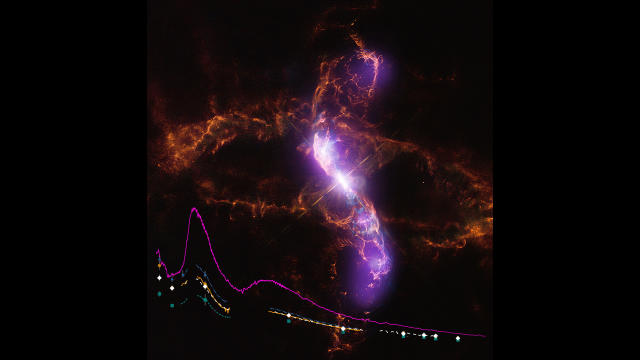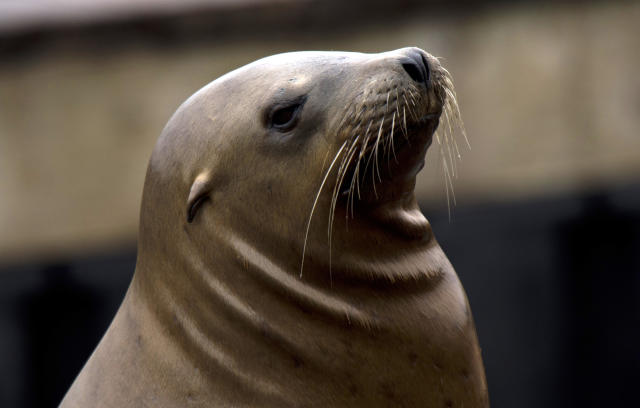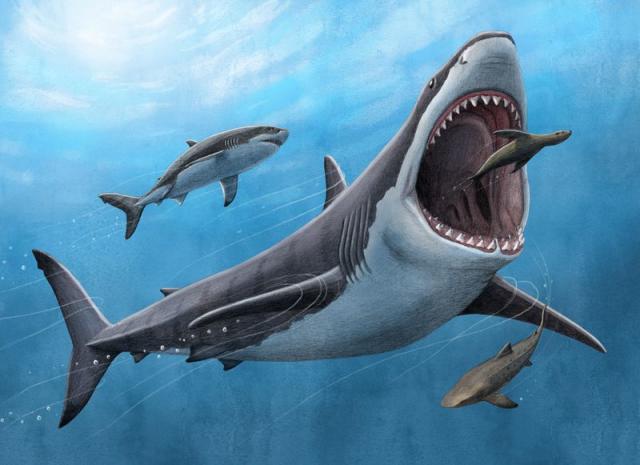Science Daily News | 28 Jun 2023

Views (131)

Listen to the eerie sounds of distant galaxies in breathtaking NASA video
NASA has produced sounds from telescope data on five galaxies in Stephan's Quintet, a binary star system called R Aquarii, and a giant galaxy known as Messier 104.

Relish in the pleasant thrumming of galaxies and stars in deep space whose data has been "sonified" into orchestral music.
Sound cannot travel through space, thanks to the lack of air to act as a medium. Instead, NASA has produced musical tones from the same telescope data that is manifested into pictures such that you can now hear the beauty of space.
The soundtrack of Messier 104 (or M104) — a giant galaxy in the Virgo cluster about 28 million light-years away, is more like a whistle that shrills and mellows according to the brightness of the sources.
Translating data into sounds can help people process the information in different ways and bring to light certain aspects of data that were not noticed previously, scientists say. Such data sonifications also make the beauty of the universe accessible to visually impaired space enthusiasts.
Related Stories
"Sonifications offer a sensory way for me to experience the scale and potency of astronomical phenomena," Christine Malec, who is a member of the blind and partially sighted community supporting NASA's sonification project, said in the same statement. "They are an invitation to blind and partially-sighted people to listen, enjoy, and then go deeper by reading to understand what exactly is being heard."
For California marine mammals, toxic algae bloom is a mass casualty incident
As peak beach season and the Fourth of July holiday approach, California officials and experts are warning about an unprecedented die-off of sea lions.

Visitors seeking lighthearted views of sea life along Southern California's coastline are instead coming upon marine mammals taking their final breaths.
As peak beach season and the Fourth of July holiday approach, California officials and experts are warning about an unprecedented die-off of sea lions.
The likely cause, domoic acid from an offshore algae bloom, is not unusual. But the breadth of the poisoning, which can cause brain damage, seizures and death in sea lions, is rare, experts say.
John Warner, CEO of the Marine Mammal Care Center, a nonprofit rescue organization that serves Los Angeles County, said the facility was at capacity, with nearly 70 sea lions on site. Another 70 along the L.A. coast still needed rescuing, he said.
"From our experience in L.A. County, this is one of the worst years in recent memory," Warner said.
The Los Angeles Unified School District was expected to announce on Tuesday that it's giving the Marine Mammal Care Center, which operates on district property, additional space, a rescue tank, and plumbing for the tank.
Tourists and visitors, meanwhile, are witnessing poisoned sea lion mothers give birth to stillborn pups, Warner said.
"Every popular beach you can name has animals seizing right now," he said, "right in front of everyone who's on vacation or enjoying the nice weather."
“I have never seen anything this intense in terms of the numbers of animals in my 20 years of responding to strandings in this area,” Michelle Berman Kowalewski, founder and director of the Channel Islands Cetacean Research Unit in Santa Barbara, said in the National Oceanic and Atmospheric Administration article.
Sick sea lions can be treated if the domoic acid poisoning is diagnosed early, said SeaWorld San Diego veterinarian Kelsey Herrick.
Toxins can be flushed out with liquids and medication, she said, but some animals will suffer irreversible brain damage. The marine mammals don't absorb domoic acid directly but rather through fish that eat the algae, Herrick said.
The San Diego coast is at the trailing end of the bloom's impacts, but SeaWorld's marine life rescue team has rescued seven sea lions and one dolphin believed to be suffering from the poisoning this month, she said.
Experts warn tourists to stay away from marine mammals in any situation, but especially if they seem to have having a seizure or they vomit, behave aggressively, or miscarry.
A postmortem exam showed brain damage consistent with the poisoning, she said.
"We find them showing up in weird places — on roads, on private property, in someone's backyard," Herrick said of affected marine mammals. "Unfortunately it's very abnormal."
Tooth analysis confirms the megalodon - a huge ancient shark - was warm-blooded
The megalodon, a huge shark that was the scourge of the ancient oceans and is a star in modern movie theaters, is named for its "large tooth" - and for good reason. Its serrated teeth - up to about 7 inches long (18 cm) - could tear through any prey in the deep blue sea. Researchers estimated that megalodon, which reached at least 50 feet (15 meters) and possibly 65 feet (20 meters) long while hunting marine mammals including whales, boasted an overall average body temperature of about 81 degrees Fahrenheit (27 degrees Celsius) and could keep it at about 13 degrees F (7 degrees C) above that of the surrounding seawater.

By Will Dunham
WASHINGTON (Reuters) - The megalodon, a huge shark that was the scourge of the ancient oceans and is a star in modern movie theaters, is named for its "large tooth" - and for good reason. Its serrated teeth - up to about 7 inches long (18 cm) - could tear through any prey in the deep blue sea.
Those teeth now are providing a fuller understanding of this extinct predator, with an analysis of the mineral makeup of their enamel-like tissue confirming that megalodon was warm-blooded - a trait scientists suspect contributed both to its tremendous success and eventual downfall.
Researchers estimated that megalodon, which reached at least 50 feet (15 meters) and possibly 65 feet (20 meters) long while hunting marine mammals including whales, boasted an overall average body temperature of about 81 degrees Fahrenheit (27 degrees Celsius) and could keep it at about 13 degrees F (7 degrees C) above that of the surrounding seawater.
This may have made megalodon a more dynamic predator - a strong swimmer able to digest food in an energetically efficient manner and, importantly, tolerate colder water, letting it broaden its range to nearly worldwide.
Most fish are cold-blooded - ectothermic - with body temperatures matching the surrounding water. But a few are warm-blooded - endothermic - generating their own body heat. Examples include certain sharks including the largest modern one, the great white.
"The only comparable living species today in terms of both diet and body temperature are the great white shark and, to a lesser extent, the mako shark. Though, as shown in our study, megalodon was quite a bit warmer than both of these modern apex predators, which makes megalodon unique," said geochemist and paleoclimatologist Michael Griffiths of William Paterson University in New Jersey, lead author of the research published in the journal Proceedings of the National Academy of Sciences.
The study found that megalodon, while warm-blooded, had a lower body temperature than whales.
"One theory is that they were regionally endothermic - that some parts of their body were warmer than other parts, whereas body temperature is higher and more uniform across the body in most large mammals," UCLA atmospheric and oceanic scientist and study co-author Robert Eagle said.
Megalodon, perhaps the largest shark of all time, appeared about 23 million years ago, then disappeared about 3.6 million years ago amid declining ocean temperatures and sea levels.
Warm-bloodedness could have been useful for megalodon in cooling waters.
"Yet, the fact that the species became extinct suggests the probable vulnerability - or the cost - of being warm-blooded because warm-bloodedness requires constant high food intake to sustain high metabolism," paleobiologist and study co-author Kenshu Shimada of DePaul University in Chicago said.
"It is quite possible that there was a shift in the marine ecosystem due to the climatic cooling that caused the sea level to drop, altering the habitats with the populations of the types of food megalodon depended on, such as marine mammals, possibly becoming scarce, leading to the extinction of megalodon," Shimada added.
Scientists previously had suspected megalodon's warm-bloodedness but the study provided the first empirical evidence. The researchers analyzed geochemical characteristics in fossil megalodon teeth to determine the temperature at which minerals in enamel-like tissue formed - an indicator of body temperature.
After being overshadowed for decades in popular culture by the great white - think the 1975 blockbuster "Jaws" and its endless progeny - megalodon is now in the spotlight thanks to the 2018 film "The Meg" and its upcoming sequel "Meg 2: The Trench."
"Megalodon is primarily represented only by teeth and a handful of vertebral specimens in the fossil record," Shimada said. "Contrary to novels and movies that portray megalodon as a super-sized, monstrous shark, the fact is that we still don't even know exactly how it looked or how it lived. This is exactly why the 'science of Megalodon' continues to be an exciting academic field."
(Reporting by Will Dunham, Editing by Rosalba O'Brien)
Texas’s nighttime temperatures are a symptom of a new, more dangerous kind of heat wave
Forecasters are warning that there is a more dangerous aspect to this heat wave: overnight temperatures are not cooling down enough.

But forecasters are warning that there is a more dangerous aspect to this heat wave, and one that is becoming more common because of the climate crisis: overnight temperatures are not cooling down enough, offering little reprieve from the oppressive heat — particularly for people who don’t have access to air conditioning.
The National Weather Service highlighted the insidious nature of this week’s heat wave in a statement on Monday, when forecasters at the Weather Prediction Center noted “there may be more danger than a typical heat event, due to the longevity of near-record or record high nighttime lows and elevated heat index readings.”
Overnight temperature records are expected to far outpace daytime records this week. Around 90 afternoon high-temperature records could be broken across the South, from Texas to the Mississippi Valley and parts of Florida, according to data from the National Weather Service.
But overnight temperatures will also stay abnormally high, with potentially 180 nighttime records broken over the next seven days.
Dallas, for example, is set to go six consecutive days without seeing temperatures drop below 80 degrees Fahrenheit overnight — a June record for the city.
Areas with a lot of asphalt, concrete, buildings and freeways absorb more of the sun’s heat than areas with parks, rivers and tree-lined streets. At night, when temperatures are supposed to cool down, the retained heat is released back into the air, said Kristie Ebi, a climate and health expert at the University of Washington.
Areas with a lot of green space – with grass and trees that reflect sunlight and create shade – are cooler on summer’s hottest days.
“Many cities put together cooling shelters, but people have to know where they are, how to get to them and what hours they operate,” Ebi told CNN, noting that city officials need to rethink urban planning to consider climate change.
“It’s going to take a while for trees to grow, but we need tree planting programs focusing on places that are particularly vulnerable — making sure that city planning takes into account that we’re heading into a much warmer future.”
Houston has had nine days far this month that haven’t dropped below 80 degrees — nearly double what’s typical for June. This has only happened two other times in the city’s records.
“We all know what it’s like to try to fall asleep on a hot night — it’s uncomfortable,” Patel said. “We often lose sleep. It is estimated that by the end of the century, we could lose about two days of sleep per year, and it will be worse for people without access to air conditioning.”
Patel explains that at its most extreme, when a human body does not get the chance to recover — typically at night — heat stress can progress to heat stroke, which is associated with confusion, dizziness and passing out.
And while this can happen to anyone, she said the impacts are more amplified on the elderly, people with chronic underlying health conditions, and young children, particularly infants. Heat waves that go on for several days tend to be associated with more deaths as the body can no longer keep itself cool.
“Living through a heat wave during the day can be like running a race,” Patel said. “We need a cool break to recover and recuperate, and when nighttime temperatures don’t drop, we don’t get that critical time we need to relieve the stress on our bodies from being overheated during the day.”
CNN’s Brandon Miller, Monica Garrett and Taylor Ward contributed to this report.
A brutal heat wave is gripping Texas for a third straight week
A relentless heat wave is gripping Texas, with temperatures escalating to record highs and surpassing 110 degrees Fahrenheit in some parts of the state.

Punishing heat is gripping Texas for a third straight week, with tens of millions of people in other states across the South also facing scorching conditions this week. It's a brutal heat wave that officials say “shows no signs of letting up.”
Studies have shown that climate change is making heat waves both more frequent and more intense, increasing the risks of heat-related illnesses and deaths, droughts and wildfires.
In addition to the heat records already set in Texas, forecasters say more could fall later this week as triple-digit temperatures are expected in parts of Missouri, Arkansas, Tennessee, Texas and Louisiana.
The weather service said Tuesday that temperatures are not expected to cool off much overnight, adding to the dangerously warm conditions in these regions.
Heat index temperatures — which represent what conditions feel like to the human body when humidity and air temperatures are combined — are forecast to be well into the triple digits over the next few days across the South, including index values of up to 110 F (43 C) in Little Rock, 111 F (44 C) in Houston and 117 F (47 C) in New Orleans.
John Goodenough, the Nobel Prize winner whose development of lithium ion batteries helped create ‘a rechargable world’, has died at 100
John B. Goodenough, the Nobel Prize-winning engineer whose contributions to developing lithium-ion batteries revolutionized portable technology, has died. He was 100.

John B. Goodenough, the Nobel Prize-winning engineer whose contributions to developing lithium-ion batteries revolutionized portable technology, has died. He was 100.
He died Sunday, according to a release from the University of Texas at Austin, where Goodenough served as a faculty member for 37 years. His cause of death was not provided.
Goodenough is credited with the crucial discovery and development in the 1980s of materials that would allow for a more stable and powerful rechargeable battery.
The innovation also laid the groundwork for the development of long-range electric vehicles and renewable energy storage.
“Live to 97 (years old) and you can do anything,” Goodenough said after he was awarded the Nobel prize, according to a 2019 release from UT Austin.
In addition to his groundbreaking research, Goodenough was a beloved mentor and professor at UT Austin, the university said.
“Not only was John a tremendous researcher, he was also a beloved and highly regarded teacher. He took great pride in being a mentor to many graduate students and faculty members who benefitted from his wisdom and encouragement,” UT Austin Provost Sharon L. Wood said in a statement.
Goodenough had been awarded the National Medal of Science, the Enrico Fermi Award and the Benjamin Franklin Medal, among several other prestigious accolades.
Born in Germany in 1922, Goodenough grew up in the northeastern US and earned a bachelors degree in mathematics from Yale University. After serving in the US Army as a meteorologist, he earned a master’s degree and Ph.D. in physics from the University of Chicago in 1952, according to UT Austin’s release.
His career began at Massachusetts Institute of Technology’s Lincoln Laboratory that year. In his 24-year tenure at MIT, he was among the researchers that laid the groundwork for random-access memory (RAM) used in laptops and desktop computers.
In 1976, Goodenough became a professor and head of the Inorganic Chemistry Laboratory at the University of Oxford, where he eventually made his lithium-ion battery breakthrough, the release said.
He went on to join the faculty of UT Austin in 1986, where he became known for his “quick wit and infectious laugh,” the university release said.
“That laugh could be heard reverberating through UT engineering buildings — you knew when Goodenough was on your floor, and you couldn’t help but smile at the thought of running into him,” the release said.
Goodenough and his wife Irene were married for more than 70 years until her death in 2016, the university said. That year, he established the the Irene W. Goodenough Endowed Presidential Scholarship in Nursing in his wife’s honor.
Additionally, he created the John B. and Irene W. Goodenough Endowed Research Fund in Engineering and St. Catherine’s College at the University of Oxford established a Goodenough Fellowship in Chemistry in his honor.
“John was simply an amazing person — a truly great researcher, teacher, mentor and innovator,” said Roger Bonnecaze, dean of UT Austin’s Cockrell School of Engineering.
“His joy and care in all he did, and that remarkable laugh, were infectious and inspiring,” Bonnecaze said in a statement. “What an impactful life he led!”
0 Likes
